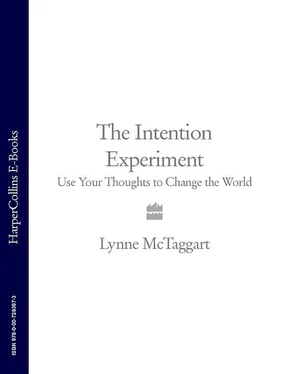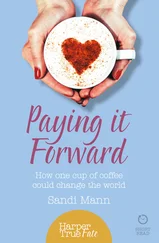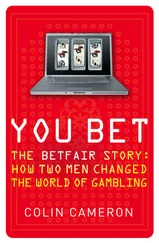As you read this book, keep in mind that this is a work of frontier science. Science is a relentless process of self-correction. Assumptions originally considered as fact must often ultimately be discarded. Many – indeed, most – of the conclusions drawn in this book are bound to be amended or refined at a later date.
By reading this book and participating in its experiments you may well contribute to the world’s knowledge, and possibly further a paradigm shift in our understanding of how the world works. Indeed, the power of mass intention may ultimately be the force that shifts the tide towards repair and renewal of the planet. When combined with hundreds of thousands of others, your solitary voice, now one barely audible note, could transmute into a thunderous symphony.
My own motive for writing The Intention Experiment was to make a statement about the extraordinary nature and power of consciousness. It may prove true that a single collective, directed thought is all it takes to change the world.
1. For a complete description of these scientists and their findings, consult L. McTaggart, The Field: the Quest for the Secret Force of the Universe , London: HarperCollins, 2001.
2. The full title of Newton’s major treatise is Philosophiae Naturalis Principia Mathematica , a name that offers a nod to its philosophical implications, although it is always referred to reverentially as the Principia .
3. R. P. Feynman, Six Easy Pieces: The Fundamentals of Physics Explained , London: Penguin, 1995: 24.
4. McTaggart, The Field , op. cit.
5. Eugene Wigner, the Hungarian-born American physicist who received a Nobel Prize for his contribution to the theory of quantum physics, is one of the early pioneers of the central role of consciousness in determining reality and argued, through a thought experiment called ‘Wigner’s friend’, that the observer, ‘the friend’, might collapse Schrödinger’s famous cat into a single state or, like the cat itself, remain in a state of superposition until another ‘friend’ comes into the lab. Other proponents of ‘the observer effect’ include John Eccles and Evan Harris Walker. John Wheeler is credited with espousing the theory that the universe is participatory: it only exists because we happen to be looking at it.
6. McTaggart, The Field , op. cit.
7. E. J. Squires, ‘Many views of one world – an interpretation of quantum theory’, European Journal of Physics , 1987; 8: 173.
8. B. F. Malle et al., Intentions and Intentionality: Foundations of Social Cognition , Cambridge, Mass.: MIT Press, 2001.
9. M. Schlitz, ‘Intentionality in healing: mapping the integration of body, mind, and spirit’, Alternative Therapies in Health and Medicine , 1995; 1 (5): 119–20.
10. R. G. Jahn et al., ‘Correlations of random binary sequences with prestated operator intention: a review of a 12-year program’, Journal of Scientific Exploration , 1997; 11: 345–67.
11. R. G. Jahn et al., ‘Correlations of random binary sequences’, op. cit.; Dean Radin and Roger Nelson, ‘Evidence for consciousness-related anomalies in random physical systems’, Foundations of Physics , 1989; 19 (12): 1499–514; McTaggart, The Field , op. cit.: 116–17.
12. These studies are itemized in great detail in D. Benor, Spiritual Healing , Volume 1, Southfield, Mich.: Vision Publications, 1992.
13. Rene Peoc’h, ‘Psychokinetic action of young chicks on the path of a “illuminated source”’, Journal of Scientific Exploration , 1995; 9 (2): 223; R. Peoc’h, ‘Chicken imprinting and the tychoscope: An Anpsi experiment’, Journal of the Society for Psychical Research , 1988; 55: 1; R. Peoc’h, ‘Psychokinesis experiments with human and animal subjects upon a robot moving at random’, The Journal of Parapsychology , September 1, 2002.
14. William G. Braud and Marilyn J. Schlitz, ‘Consciousness interactions with remote biological systems: anomalous intentionality effects’, Subtle Energies and Energy Medicine , 1991; 2 (1): 1–27; McTaggart, The Field , op. cit.: 128–9.
15. Marilyn Schlitz and William Braud, ‘Distant intentionality and healing: assessing the evidence’, Alternative Therapies in Health and Medicine , 1997; 3 (6): 62–73.
16. William Braud and Marilyn Schlitz, ‘A methodology for the objective study of transpersonal imagery’, Journal of Scientific Exploration , 1989; 3 (1): 43–63.
17. W. Braud et al., ‘Further studies of autonomic detection of remote staring: replication, new control procedures and personality correlates’, Journal of Parapsychology , 1993; 57: 391–409; M. Schlitz and S. LaBerge, ‘Autonomic detection of remote observation; two conceptual replications’, in D. Bierman (ed.), Proceedings of Presented Papers: 37 Annual Parapsychological Association Convention, Amsterdam , Fairhaven, Mass.: Parapsychological Association, 1994: 465–78.
18. D. Benor, Spiritual Healing: Scientific Validation of a Healing Revolution , Southfield, Mich.: Vision Publications, 2001.
19. F. Sicher, E. Targ et al., ‘A randomized double-blind study of the effect of distant healing in a population with advanced AIDS: report of a small scale study’, Western Journal of Medicine , 1998; 168 (6): 356–63. For a full description of the studies, see McTaggart, The Field , op. cit.: 181–96.
20. Psychologist Dean Radin conducted a meta-analysis in 1989 at Princeton University of all known dice experiments (73) published between 1930 and 1989. They are recounted in his book Entangled Minds , New York: Paraview, 2006: 148–51.
21. J. Hasted, The Metal Benders , London: Routledge & Kegan Paul, 1981, as cited in W. Tiller, Science and Human Transformation; Subtle Energies, Intentionality and Consciousness , Walnut Creek, Calif.: Pavior Publications, 1997: 13.
22. McTaggart, The Field , op. cit.: 199.
23. W. W. Monafo and M. A. West, ‘Current recommendations for topical burn therapy’, Drugs , 1990; 40: 364–73.
PART ONE
A human being is part of the whole, called by us
‘universe’, a part limited in time and space. He
experiences himself, his thoughts and feelings as
something separated from the rest – a kind of
optical delusion of his consciousness.
Albert Einstein
CHAPTER ONE
FEW PLACES IN THE GALAXY are as cold as the helium-dilution refrigerator in Tom Rosenbaum’s lab. Temperatures in the refrigerator – a boiler-sized circular apparatus with a number of cylinders – can descend to a few thousandths of a degree above absolute zero, almost 273°C below freezing – three thousand times colder than the farthest reaches of outer space. For two days, liquid nitrogen and helium circulate around the refrigerator, and then three pumps constantly blasting out gaseous helium take the temperature down to the final rung. Without heat of any description, the atoms in matter slow to a crawl. At this scale of coldness, the universe would grind to a halt. It is the scientific equivalent of hell freezing over.
Absolute zero is the preferred temperature of a physicist like Tom Rosenbaum. At 47, as a distinguished professor of physics at the University of Chicago and former head of the James Franck Institute, Rosenbaum was in the vanguard of experimental physicists who liked exploring the limits of disorder in condensed-matter physics, the study of the inner workings of liquids and solids when their underlying order was disturbed. 1In physics, if you want to find out how something behaves, the best way is simply to make it uncomfortable and then see what happens. Creating disorder usually involves adding heat or applying a magnetic field to determine how it will react when disturbed and also to determine which spin position – or magnetic orientation – the atoms will choose.
Читать дальше











